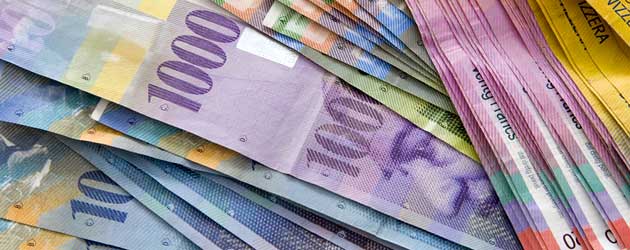
Investor’s hunger for higher-yielding assets triggers Franc declines.
The Swiss Franc exchange rate was in the region of 0.8124 against the Euro as of 10:14 am GMT
After positive data from Australia, the UK and Eurozone increased investor-appetite for higher risk assets the Swiss Franc declined against peers including the Euro and US Dollar.
The Dow Jones Industrial Average (an index based on the average price of specific stocks which indicates the relative price of shares on the NY stock exchange) achieved a record high yesterday, adding to recent indications that the global economy could be on a more solid footing.
Consequently, riskier assets like the Euro advanced whilst lower-yielding currencies, including the Swiss Franc, declined.
As Swissquote Bank’s chief forex strategist asserted: ‘The Franc is being sold pretty broadly. Euro-Swiss is like a moving average of risk appetite and generally doesn’t react as quickly to broader risk-on trading as other assets, so we are perhaps seeing some carry over from yesterday’s exuberance.’
Yesterday’s positive retail sales data and services PMI for the Eurozone saw the Franc loose 0.2 per cent against the Euro, and the currency has shed an additional 0.2 per cent this morning.
The Franc has also fallen by a modest 0.2 per cent against a broadly softening US Dollar.
So far this week the Swiss Franc has shed 1.3 per cent.
If optimism regarding global growth continues to improve, making investors bullish in the process, the safe-haven Franc could continue to decline.
This afternoons US employment report is expected to show an increase in payrolls in February, a positive sign for the world’s largest economy, and consequently the global economy at large.
In other news, Eurostat released its second estimate for fourth quarter GDP for the Eurozone this morning. The figure was down 0.6 per cent on the previous quarter, in line with economists’ expectations. Eurozone GDP for the whole of 2012 also fell by 0.9 per cent.
Portugal, Cyprus and Slovenia posted the biggest declines in growth in the fourth quarter from the previous three months while Latvia, Estonia and Lithuania recorded the largest growth increases.

Comments are closed.